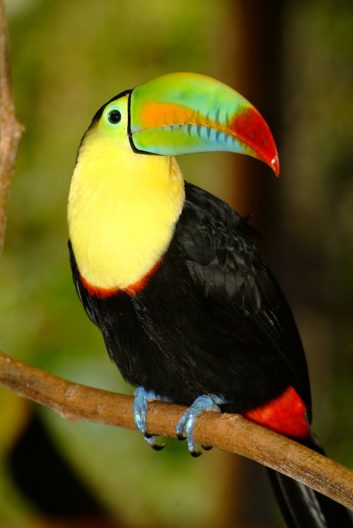Vad händer när på Galapagos
January • Warm marine currents arrive. • Land birds start nesting. • On Española the adult male marine iguanas become brightly colored. • The green sea turtle arrives to the beaches of Galapagos to l …
January
• Warm marine currents arrive.
• Land birds start nesting.
• On Española the adult male marine iguanas become brightly colored.
• The green sea turtle arrives to the beaches of Galapagos to lay their eggs.
• Land iguanas begin reproductive cycles on Isabela.
• Water and air temperatures rise and stay warm until June.
• Ideal time for snorkeling.
February
• On Floreana flamingos start nesting.
• White-cheeked pintails start their breeding season.
• Masked boobies on Española are at the end of their nesting season.
• Marine iguanas nest on Santa Cruz.
• Highest water temperature reaches 77°F and remains until April.
• Galapagos dove’s nesting season reaches its peak.
March
• Water temperature reaches its max.
• Sporadic tropical rains and intense sun. Air temperature can reach up to 86°F.
• Marine iguanas nest in Fernandina.
• March 21, the summer equinox signals begin. The waved albatross arrive to Española.
April
• Massive arrival of waved albatross to Española. Their courtship starts.
• Hatching season ends for giant tortoises.
• Green sea turtles’ eggs begin to hatch.
• Land iguanas hatch on Isabela.
May
• North Seymour’s blue-footed boobies begin their courtship.
• Sea turtles are still hatching on Gardner Bay, Punta Cormorant and Puerto Egas.
• Most of the marine iguanas’ eggs hatch from nests on Santa Cruz.
• Palo Santo trees begin to shed their foliage.
• Albatross on Española start laying their eggs.
• Band rumped storm petrels begin their first nesting period.
June
• Beginning of the dry season.
• Giant tortoises migrate from highlands to lowlands for suitable nesting places.
• Beginning of the nesting season of giant tortoises.
July
• Sea birds are active, especially blue- footed boobies on Española.
• Flightless cormorants court and nest on Fernandina.
• It’s possible to find oystercatchers nesting on Puerto Egas, Santiago.
• Lava lizards initiate mating rituals until November.
• Whales are more likely to be observed, especially off the Western coast of Isabela.
August
• The Galapagos hawks court on Española and Santiago.
• Masked boobies and swallow tailed gulls nest on Genovesa.
• Temperature of the ocean descends to 64°F, which obviously varies according to the geographic zones among the islands.
• Migrant shore birds start to arrive, and stay on the islands until March.
• Giant tortoises return to the highlands of Santa Cruz.
September
• Peak of the dry season.
• The air temperature reaches its lowest – 66°F.
• Penguins demonstrate remarkable activity on Bartolomé until December.
• Sea lions are very active, especially in the western and central areas of the Archipelago.
• Most species of marine birds remain active at their nesting sites.
October
• Lava herons nest until March.
• The Galapagos fur seal begin their mating period.
• Boobies raise their chicks on Española.
• Giant tortoises still lay their eggs.
November
• Sea lion pups are born.
• Sea lions are sexually active on the Eastern part of the Archipelago.
• Breeding season of brown noddies.
• Band rumped storm petrels begin their second nesting period.
December
• Hatching of the giant tortoise’s eggs begins and lasts until April.
• Green sea turtles display their mating behavior.
• The warm season begins and all of the plants of the dry zone produce leaves.
• Galapagos “turns green”. The first young albatross fled.





